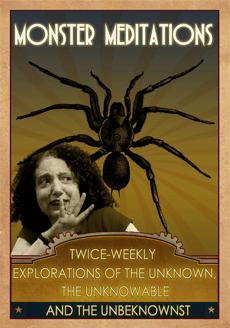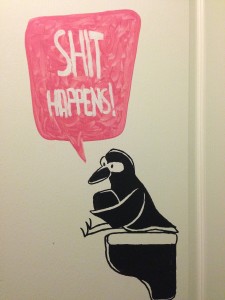The most popular advice to writers is “show, don’t tell.” Show the character’s anger in how he holds a pen in a death grip. Show the sparks between two potential lovers as they meet for the first time. Show the anxiety as the protagonist pauses before opening a door. Don’t blah, blah, blah about it all. The idea is to slip the necessary exposition into the storytelling so that the story doesn’t get weighed down.
There’s a variation on the show/don’t tell theme that I am exploring. It’s how dialog gets used—and misused—to present information to the reader. For some writers there doesn’t seem to be a line between a character giving a lecture or simply telling an interesting story. The first one is a bore, unless the character is a lecturer. In that case, he or she may be a bore, but buried in the middle of a description of rare stamps, medieval medicine or the minutia of the Senate’s rules, is information the other characters (and the readers) will find useful later in the story.
On the other hand a character relating a story can be charming, alarming and everything in-between, but if it’s not written with care, it’s likely to take on the feel of a lecture that puts half the class to sleep. For the most part, long chunks of exposition in the form of monologues feels unnatural and gets in the way of storytelling.
A less obvious problem occurs in dialog. The back-and-forth sometimes masks much needed exposition in a clever exchange. This is not easy to pull off. I keep trying! Reading the dialog out loud is helpful. Not only does hearing the conversation help make it sound more like a give and take, it’s a good way to prevent slipping into another exposition trap—the deadly ‘you’re really talking about this?’ trap.
Let me back track to give you a solid example. As a Tony Hillerman fan, I was happy to see that his daughter was publishing a new series picking up where her late father left off. I wanted to spend some time with Navajo Detectives Chee and Leaphorn. The original series inspired to learn more about the Native American history, cultures and spirituality Hillerman infused into each mystery.
The new books have the same sense of place, but the information about the Navajo people and the civilizations that came before them, is doled out in awkward chunks of dialog. Chee and his wife share insights into the culture as if they had never discussed the topic before. I kept thinking, ‘you’re really talking about that?’ As I read these awkward conversations, I wondered if it would be better if one of them were reading a textbook out loud while the other drove the car. Yes… sometimes it got that bad. It hit PAUSE in the story. I took away a big, red warning sign that hovers over me as I write expository dialog.
The sign says: Is this the best way to communicate these points?






I struggled with dialogue. That’s why I tend to keep info in dialogue to things like mood, or character or foreshadowing – that little nugget that’s slipped in casually while apparently focused on something else.
And to make sure I don’t get carried away, I try and keep the sentences in dialogue really short. Part of that is ‘breath’ – we tend to talk in chunks that correspond to comfortable breathing – and part is down to retention. Long, convoluted sentences are actually easier to understand in the written form than they are when read or spoken out loud. Then again, that ‘s just my personal observation.
‘struggled’ should read ‘struGGLE’ as I still find it very hard. :/
Breath! That’s a brilliant point. I’m so focused on vocabulary and exposition Vs the patter of every day chatter, that I lost track of the OTHER major element——breath!
The short sentences, or the rush of words, the stuttering as we think and the false starts of sentence structure in dialog, are all related to how we breathe and when. I studied singing as a teenager and breath is about phrasing in a song, not just how long you can milk a note or how long you can go without stopping, breath is about DRAMA and intensity and character in dialog! Thanks for the reminder.
Maybe it’s because I’ve become more aware of not doing this, but damn I catch this a lot on TV!
It’s particularly annoying on TV and in movies, when the visuals can carry so much of the communications. I guess there’s a lot of laziness in the scripts?
I’ve been home with the flu watching tons and tons of mysteries (between cable TV & streaming video) and, yes, the expository dialog mistakes are rampant.